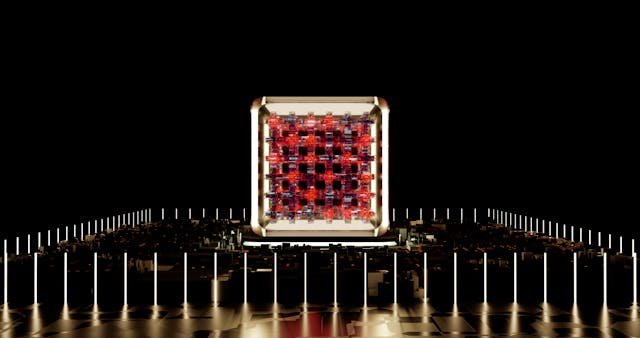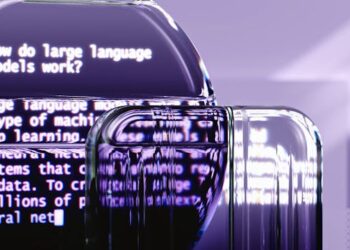MPCT: multiscale point cloud transformer with a residual network: A deep dive into its architecture and edge in 3D understanding.
Let’s strip this down to the basics but keep it razor sharp. The Multiscale Point Cloud Transformer with a Residual Network (MPCT) is not just another academic acronym. It’s an attempt to break through one of the hardest puzzles in computer vision: making sense of raw, unstructured 3D data. These computer vision breakthroughs are reshaping how machines understand and navigate our three-dimensional world.
Point clouds, collections of millions of floating dots representing surfaces in three-dimensional space, are messy. They don’t come with order, fixed grids, or pixel-like regularity. That’s why ordinary deep learning models buckle under the weight of irregularity. MPCT doesn’t just cope; it thrives. It bends the Transformer architecture, couples it with multiscale thinking, and finishes with the reliability of residual connections.
What You'll Discover:
Why Standard Transformers Struggle with Point Clouds
Traditional Transformers were born to handle text and later images. Both come with some form of structure: words have sequence, pixels sit in neat rows and columns. But in point clouds, there’s no clear order, no grid, and no uniform density. Feed them into a plain Transformer and two things happen:
- Computation explodes. Vanilla self-attention grows with the square of the number of points. In 3D, that becomes a nightmare.
- Spatial awareness evaporates. Without clever design, the Transformer can’t naturally sense geometry, distance, or neighborhood structure.
MPCT doesn’t accept these limits. It redesigns the game.
The Radical Edge of MPCT
Position-Encoded Linear Attention
Instead of running self-attention across every possible point pair, MPCT inserts positional cues directly into attention while trimming down the computational cost. The result is linear attention, attention that scales gracefully even as point sets get huge. It’s like upgrading from gridlock traffic to a well-engineered highway.
Multiscale Embedding
Objects in the real world reveal different truths depending on how you zoom in. A chair’s leg has tiny curves; the overall frame has sweeping geometry. MPCT respects this by embedding features at multiple scales, capturing detail and structure together.
Residual Fusion
Bringing together information from multiple scales isn’t trivial. Fuse too aggressively and you drown details; blend too weakly and you miss the big picture. MPCT uses residual networks to balance this act, keeping essential patterns intact while layering in new context.
Performance that Proves the Point
Numbers don’t lie. On controlled datasets, MPCT climbs into the mid-90s in classification accuracy. On noisy, real-world data, the kind scanned from cluttered environments, it still stays firmly ahead of many alternatives. That consistency across “clean lab” and “messy street” scenarios makes it more than just an academic marvel.
How the Architecture Fits Together
Here’s how MPCT flows from raw dots to refined understanding:
- Input Point Cloud: A scatter of unordered 3D coordinates enters the pipeline.
- Position-Encoded Attention: The model injects geometry awareness while cutting complexity down to linear levels.
- Multiscale Embeddings: Separate channels zoom in and out, capturing both fine and global features.
- Residual Fusion Network: These embeddings blend through residual pathways, ensuring stability and richness.
- Classification or Segmentation Head: The final prediction, whether labeling an object or segmenting regions, is clean, confident, and fast.
Why MPCT Isn’t Just “Another Model”
- It scales. The linear attention design means you can push point counts higher without frying memory.
- It’s versatile. From autonomous driving to AR/VR setups, it adapts to both polished and messy environments.
- It balances perspectives. By working across scales, it captures nuance and context, like appreciating both brushstrokes and the painting as a whole.
- It’s resilient. Residual blending keeps the network stable even as features layer up.
Bringing It Down to Earth
Imagine training a robot to recognize furniture in a living room. A basic model might confuse the back of a chair with the edge of a table if points overlap. MPCT, with its multiscale eyes and residual blending, recognizes not just the local leg of the chair but also its broader frame. The robot ends up understanding the “chairness” of the object instead of just matching random dots.
Beyond the Lab, Applications That Matter
- Autonomous Navigation: Cars and drones need fast, reliable interpretation of LiDAR scans. MPCT makes sense of chaotic roadside data without lag.
- Robotics: Grippers and service robots gain sharper understanding of cluttered environments, from warehouses to kitchens.
- AR and VR: Virtual overlays need accurate meshes of real-world scenes. MPCT helps generate cleaner reconstructions in real time.
- Healthcare Imaging: Point clouds from 3D scans can be interpreted with higher accuracy, leading to better diagnostic tools.
Key Takings
- MPCT is built for unordered, messy point clouds where standard Transformers stumble.
- Its linear attention keeps computation efficient while embedding geometry.
- Multiscale embeddings let it capture details and context together.
- Residual fusion blends scales without losing critical information.
- It consistently performs well in both synthetic benchmarks and real-world noisy datasets.
- Its architecture makes it perfect for robotics, AR/VR, autonomous navigation, and medical 3D imaging.
Additional Resources:
- Residual MLP Framework for Point Clouds: A minimalistic yet powerful approach using residual MLPs for 3D point classification.
- 3D Convolution Transformer Networks for Point Cloud Classification: Explores combining convolutions with Transformers to balance local and global feature extraction.



